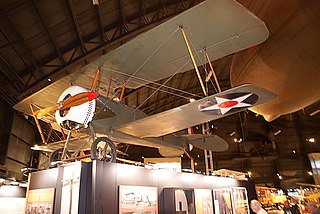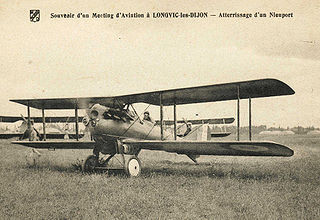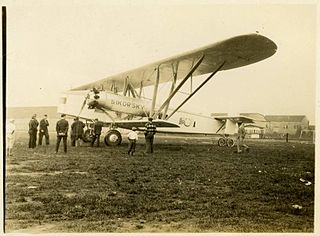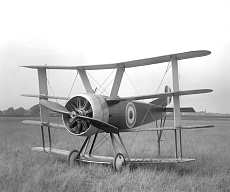
The Sikorsky S-29-A was a twin-engine sesquiplane airliner, first flown in 1924. It was the first aircraft that aviation pioneer Igor Sikorsky designed and built after coming to the United States, hence the special "-A" suffix signifying "America". The aircraft made many successful long-range flights, most of which Sikorsky piloted himself. The S-29-A claims a number of "firsts" in aviation, including the first twin-engine aircraft capable of maintaining altitude on one engine, the first aircraft to broadcast a radio musical program in-flight, in 1925 and in 1926 the first aircraft to display a motion picture in flight. The S-29-A was also one of the first aircraft to make use of an airstair door, located on the starboard side of the fuselage.

The Aeronca 15AC Sedan is a four-seat, fixed conventional gear light airplane which was produced by Aeronca Aircraft between 1948 and 1951. Designed for personal use, the Sedan also found applications in utility roles including bush flying. The Sedan was the last design that Aeronca put into production and was the largest aircraft produced by the company.

The Farman F.60 Goliath was a French airliner and bomber produced by the Farman Aviation Works from 1919. It was instrumental in the creation of early airlines and commercial routes in Europe after World War I.

The Consolidated PT-1 Trusty is a biplane primary trainer used by the United States Army Air Service (USAAS) in the 1920s.

The Armstrong Whitworth F.K.10 was a British two-seat quadruplane fighter aircraft built by Armstrong Whitworth during the First World War. While it was ordered in small numbers for the Royal Flying Corps and Royal Naval Air Service, it was not used operationally. It is one of the few quadruplane aircraft to reach production.

The Curtiss Eagle was an airliner produced in small numbers in the United States shortly after World War I. The aircraft was a conventional biplane with three-bay, unstaggered wings of equal span. The fuselage was a very advanced design for its day, incorporating careful streamlining of its monocoque structure, and offering the crew as well as the passengers a fully enclosed cabin. The Eagle is sometimes named as the first American tri-motor aircraft; however Curtiss' own Model H flying boat flew with three engines for a time in 1914 before being converted back to twin-engine configuration.

The Standard E-1 was an early American Army fighter aircraft, tested in 1917. It was the only pursuit aircraft manufactured by the United States during World War I. It arrived late in World War I, and as a result saw more use in the months following the Armistice than those preceding it.

The Thomas-Morse S-4 Scout is an American biplane advanced trainer, operated by the United States Army and the United States Navy. Dubbed the "Tommy" by pilots who flew it, the aircraft became the favorite single-seat training airplane produced in the U.S. during World War I. It had a long and varied career beginning with the S-4B, which first appeared in the summer of 1917.

The Nieuport-Delage NiD.29 was a French single-seat biplane fighter designed and built by Nieuport-Delage for the French Air Force.

The SNCASE SE.161 Languedoc was a French four-engined airliner produced by SNCASE (Sud-Est). Developed from the Bloch MB.160 and known in the late 1930s as the (SNCSO) Bloch MB.161, the SE.161 was in service with Air France and the French military after World War II.

The Besson H-5 was a French transport quadruplane flying boat designed by the Marcel Besson company of Boulogne. The only H-5 was damaged and development was abandoned.

The Baumann Brigadier was a prototype American light transport aircraft of the late 1940s. It was a twin-engined monoplane, which, unusually, was of pusher configuration. Only two were built, plans for production never coming to fruition.
In aviation, a multiplane is a fixed-wing aircraft-configuration featuring multiple wing planes. The wing planes may be stacked one above another, or one behind another, or both in combination. Types having a small number of planes have specific names and are not usually described as multiplanes:

The Blériot 111 was a French four-seat executive transport monoplane designed by André Herbemont. The first French aircraft to be fitted with a retractable landing gear, after six years development it was not ordered into production.

The Bernard 60 T and 61 T were closely similar, three engine, twelve seat passenger transports designed in France between 1929 and 1933. They were not a success and only one of each was built.
The Timm Aircoach, also called the Timm Coach and the Golden Shell Special, was a custom-built, high-capacity, high altitude aircraft for charter flights.

The Sikorsky S-37 was an American twin-engine aircraft built by the Sikorsky Manufacturing Corporation. Both examples of the series were completed in 1927. The S-37 was specifically designed to compete for the Orteig Prize and would be the last land based fixed-wing aircraft Sikorsky would produce.

The Wight Quadruplane, also referred to as the Wight Type 4, was a British single seat quadruplane fighter aircraft built by J Samuel White & Company Limited during World War I. Testing revealed design deficiencies and after the only example was involved in a crash, further work on the aircraft was abandoned.
The Itoh Emi 16 Fuji-go (Fuji), built in 1920, was intended as a cheap and simple general purpose civil biplane but gained publicity with exhibition flights and successful speed and altitude contests against higher-powered fighter aircraft.
















